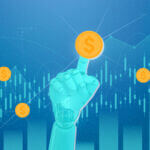
How should we begin to qualify the effects the Internet of Things (IoT) has and will have on the economy? IoT is a broad—and somewhat confusing—term to many, but in some cases, it doesn’t seem broad enough. When IoT itself is so hard to define, it can be difficult to measure all the ways in which it directly or indirectly affects economic trends.
In an attempt to parse out what effect IoT truly has on the economy, I’ve divided this into four categories of economic impact, using the United States as an example:
- GDP Growth
- Growth Distribution
- Labor Markets
- Regulation, Rent-Seeking and Competition
GDP Growth
To begin, let’s consider IoT as a proxy for machine-to-machine (M2M) interactions. Let’s use
“First, we have worked with data up to 2015; the future impact of M2M may well be more intense. Second, our estimates do not take into account the indirect impact of the IoT on productivity, which would have an additional knock-on effect on economic growth. Even with these caveats, our analysis provides further empirical evidence that investment in IoT technology increases GDP significantly.” (Source: Frontier Economics)
Because IoT is integral to a larger narrative of digital transformation, its impacts on shaping the future economy cannot be divorced from those larger entanglements. Regardless, IoT’s adoption in industries such as agriculture, energy, manufacturing, and urban development promises to return economic gains. Waste management (of time or resources) can boost cost savings and industrial productivity. New markets for data promise to expand opportunities to monetize the inputs and outputs of IoT deployments.
Growth Distribution
GDP can be helpful because it allows for a common vocabulary to compare economies—helping us to compare the size of the US economy to the size of the Ecuadorian economy, for example. However, it’s not the most widely used nor most telling metric of economic growth. GDP per capita (i.e. per person) is another metric that’s often used to capture economic growth, which tells us what growth looks like in relation to population size. It makes more sense that the United States’ GDP is higher than Ecuador’s, because it’s a bigger country, but how does it compare to other countries of its size? GDP per capita can help us compare growth in a more proportional way. Even still, because each of these numbers is monolithic, they don’t give us any insight into how economic growth is actually being distributed. It could all be going toward one industry, one region of the world, or one class of people.
A recent report by a consulting agency predicts that the benefits of IoT adoption will generate the most value in “advanced economies.” However, if viewed optimistically, approximately 40 percent of this value will accrue to “developing economies.”
What will make this true? Successful economic growth due to IoT depends on a few key pillars of strategic adoption.
Economic growth is heavily dependent on political favorableness, social resilience, the availability of critical resources, trade laws, market readiness, and many other factors. I could spend N number of articles just parsing out this complexity, but at a macroscopic level, we can predict that there will be winners and losers in the digital transformation that is already underway. Because strategic adoption is crucial for developing economies, and because growth due to IoT will skew toward advanced economies, it’s likely that IoT will reinforce inequalities in global markets.
Labor Markets
Talking about automation and job loss seems almost tired at this point: we know job loss will happen, and we know it may be catastrophic in the short term. Nonetheless, these labor shocks are only beginning to materialize, so a discussion about IoT and the economy would be incomplete without acknowledging
Supply shocks due to job loss will rock the labor market, distributed throughout time based on the automation timeline of different industries. Segmentation of the labor market will sway toward the tech sector, with new jobs needed to manage widespread growth in the adoption of technology. Paired with this, service-sector jobs (the ones that aren’t automated away) may experience bounce-back growth due to new cost savings at companies that can now afford to hire more people and expand their businesses. Artisanal services (e.g. hand-brewed coffee as a service experience, even though it’s much more efficient to automate the brewing process) and services that only humans can meaningfully provide (e.g. services like in-person therapy) may become more valuable in some ways, due to their relative inefficiency paired with high demand.
Regulation, Rent-Seeking and Competition
As with most new technological advancements, IoT deployments will be met with both excitement and necessary caution. Security compromises, big data concerns, rent-seeking (e.g. monopolistic) behavior—you name it, and people are waiting to capitalize on it. Tech companies are susceptible to it all. There isn’t only the political justification for creating IoT standards and antitrust laws, there is also economic justification.
Industry regulation can serve many roles depending on how it is crafted and executed. Regulation can cultivate competition or stifle it. Depending on how political resources are wielded to curb antitrust behavior, the creation of IoT standards can serve consumers—like the FCC “free[ing] up more spectrum that can be used for IoT communications,” as Brookings’ Jonathan Sallet writes. It can also fail them, such as when industry lobbyists rally for regulations that disproportionately favor their interests.
Regulation of the IoT economy will be critical to sustaining public trust and lasting growth in the sector. However, this regulation will be successful only if it encourages competition, reinforces security standards, incorporates a diverse scope of IoT stakeholders, and is flexible to adapt to new industry developments.
IoT is Part of a Larger Digital Transformation
The Internet of Things is one piece of a larger puzzle. Or, rather, the expansion of IoT technology will be fueled by and paired with parallel growth in related industries. Yes, IoT will drive economic growth. No, the economic benefits of this growth will not accrue equitably across national or industrial or socioeconomic lines. Yes, job loss will happen, and yes, there will be forces—market and otherwise—that will rush to try and mitigate this shock. Yes, regulation (I hope) will be introduced, but its details and biases are yet to be determined.
We can already notice these trajectories unfolding in today’s IoT deployments. To be a winner in the IoT-enabled economy, strategic adoption is key. With this prediction of economic growth, countries, states, firms,





 New Episode
New Episode





 Latest IoT News
Latest IoT News










